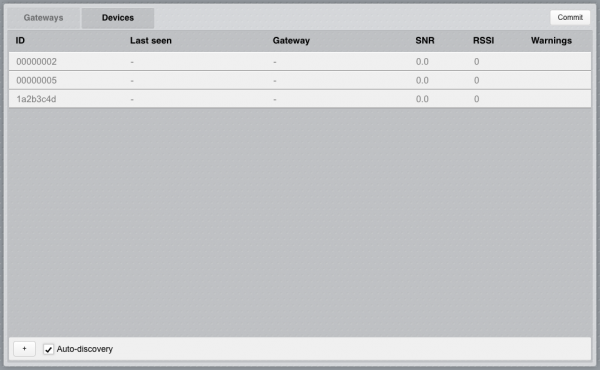Difference between revisions of "MQTTBroker Utility"
Jump to navigation
Jump to search
| Line 4: | Line 4: | ||
To configure the MQTT clients to be used with HSYCO, enable auto-discovery ("Auto-discovery" checkbox). | To configure the MQTT clients to be used with HSYCO, enable auto-discovery ("Auto-discovery" checkbox). | ||
MQTT clients transmitting will appear in the list: | MQTT clients transmitting will appear in the list: | ||
| + | |||
| + | [[File:LoRaWAN_Util_dev_discovery.png|border|600px|center|Devices discovery]] | ||
== Committing the configuration == | == Committing the configuration == | ||
When all clients are configured (not greyed-out in the lists), click on the "Commit" button on the top-right corner of the main page. The configuration will be persisted and the MQTTBroker I/O Server will restart with the new configuration. | When all clients are configured (not greyed-out in the lists), click on the "Commit" button on the top-right corner of the main page. The configuration will be persisted and the MQTTBroker I/O Server will restart with the new configuration. | ||
Revision as of 12:46, 26 August 2019
The MQTTBroker Utility application provides a graphical interface to configure a MQTTBROKER I/O Server. When a MQTTBROKER I/O Server is defined in HSYCO, the MQTTBroker Utility will appear among the applications of the manager.
To configure the MQTT clients to be used with HSYCO, enable auto-discovery ("Auto-discovery" checkbox). MQTT clients transmitting will appear in the list:
Committing the configuration
When all clients are configured (not greyed-out in the lists), click on the "Commit" button on the top-right corner of the main page. The configuration will be persisted and the MQTTBroker I/O Server will restart with the new configuration.
